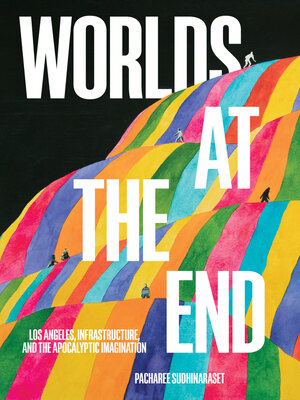Worlds at the End
ebook ∣ Los Angeles, Infrastructure, and the Apocalyptic Imagination · Critical Race, Indigeneity, and Relationality
By Pacharee Sudhinaraset

Sign up to save your library
With an OverDrive account, you can save your favorite libraries for at-a-glance information about availability. Find out more about OverDrive accounts.
Find this title in Libby, the library reading app by OverDrive.



Search for a digital library with this title
Title found at these libraries:
| Library Name | Distance |
|---|---|
| Loading... |
Worlds at the End attends to a body of literature that renders Los Angeles's infrastructure, or its material foundations, as central to the rise and consolidation of colonial life. Pacharee Sudhinaraset employs a women-of-color feminist methodology to examine Indigenous, Black, Asian American, and Latinx literary works about apocalypse and the end times.
Worlds at the End analyzes destruction, rupture, and continuance through texts ranging from Karen Tei Yamashita's Tropic of Orange, which considers racial colonial infrastructure, to the work of Diné poet Esther Belin, which illuminates how the separation between the Indian reservation and LA is part of a broader infrastructural network of termination. And she unpacks Octavia Butler's post-apocalyptic novel, Parable of the Sower, where LA's freeways and roadways are routes of forced migration, colonization, and flight.
Tearing down existing institutions that marginalize people of color and moving past them, Worlds at the End highlights the imaginaries of those subjugated, racialized, and made other, for whom modernity, freedom, and progress meant violence, brutality, and relegation to the status of devalued surplus populations. As Sudhinaraset deftly shows, the apocalypse marks moments of historical and spatial transition, offering stories of doomsdays that will give rise to resurgence and regeneration.
Worlds at the End analyzes destruction, rupture, and continuance through texts ranging from Karen Tei Yamashita's Tropic of Orange, which considers racial colonial infrastructure, to the work of Diné poet Esther Belin, which illuminates how the separation between the Indian reservation and LA is part of a broader infrastructural network of termination. And she unpacks Octavia Butler's post-apocalyptic novel, Parable of the Sower, where LA's freeways and roadways are routes of forced migration, colonization, and flight.
Tearing down existing institutions that marginalize people of color and moving past them, Worlds at the End highlights the imaginaries of those subjugated, racialized, and made other, for whom modernity, freedom, and progress meant violence, brutality, and relegation to the status of devalued surplus populations. As Sudhinaraset deftly shows, the apocalypse marks moments of historical and spatial transition, offering stories of doomsdays that will give rise to resurgence and regeneration.







